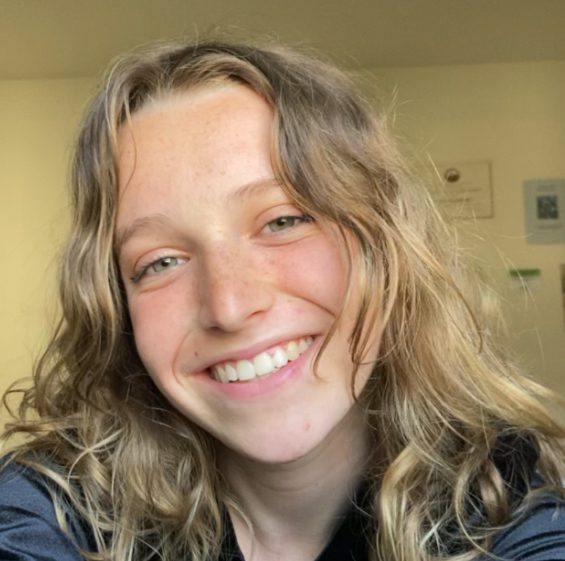Cathy Kenderski (Fall ’25) | Molecular and Cell Biology
Cathy (she/her) is a 2025 SURF L&S researcher majoring in Molecular and Cell Biology. For her SURF project this summer, she will be researching the interaction of lentiviral capsids with host factor CPSF6.
How did you get interested in the topic of your project?
My approach to research is heavily influenced by my upbringing. Mitigating disease is personally relevant to me: decades of corruption in my Italian hometown, Caserta, created a toxic waste disposal crisis so severe that rates of cancer and congenital diseases are three times higher in the city where I was born than the rest of Italy. My love for research started in high school when, in an attempt to solve the problem, I developed a chemical marker for microplastics in drinking water. The same drive that motivated this project–-the desire to improve my immediate environment through research–-informs my goals today.
My project seeks to establish whether the capsids of primate lentiviruses (simian immunodeficiency viruses, or SIVs) bind CPSF6. Recently, a novel capsid-targeting antiviral, Lenacapavir, was approved, reducing the incidence of HIV infection by 96%. Lenacapivir works by binding and disrupting the viral capsid, the protein shell that encapsulates the HIV genome. CPSF6, a dependency factor that HIV hijacks, binds the same pocket that Lenacapivir does. So, the ability to bind CPSF6 could inform whether a given virus is susceptible to a given treatment: a full understanding of varied interactions between primate SIV capsids and CPSF6 advances our understanding of the role of the viral capsid, a key target of life-saving drugs.
How will the skills you developed through your research fellowship help you achieve your academic and/or professional goals?
Through this fellowship, I have the opportunity to expand beyond the SIV capsids I have already assayed, namely those from SIVs that infect chimpanzees, to SIVs that infect grivets, mandrills, colobus monkeys, and African green monkeys. Last summer, I found that chimpanzee SIVs that bound CPSF6 were the same SIVs that had managed to successfully cross over to infect humans. This summer will help me establish whether this association is tangential or a pattern maintained across primate SIVs.
My professional goals are closely tied to my project. I am applying to Biology Ph.D. programs this fall, and hope to meaningfully capture the extent to which I care about helping people live longer, healthier lives. Furthering my work on the factors that influence zoonotic crossover in HIV is a testament to that.
What are you almost excited about as you look ahead to your summer research?
I’m most excited for the data that comes out of my research: the link between crossover and CPSF6 binding is purely speculative at the moment. If I find that certain primate SIVs do not bind CPSF6, I hope to take my project further and map out integration sites for these SIVs. We know that CPSF6 is implicated in HIV’s ability to integrate itself in gene dense regions, and I would be curious to measure how and where successful SIVs integrate themselves without binding this dependency factor. I’m also excited to be back at the bench full time: balancing classes and lab work is fulfilling, but I’m grateful to be afforded the opportunity to devote all of my time to research this summer. Even amidst experimental failure, I love what I do, and I am eternally grateful that I get to study the beauty of cellular machinery.
